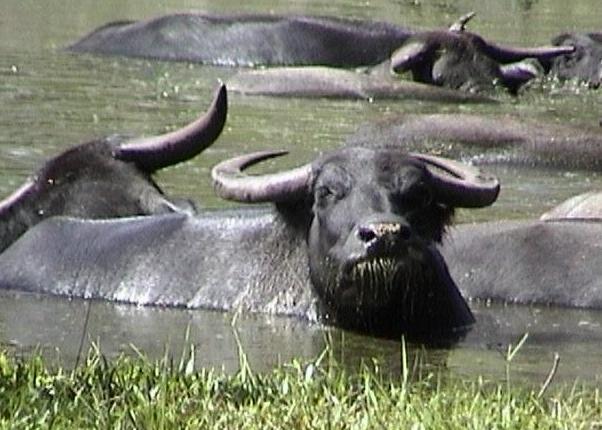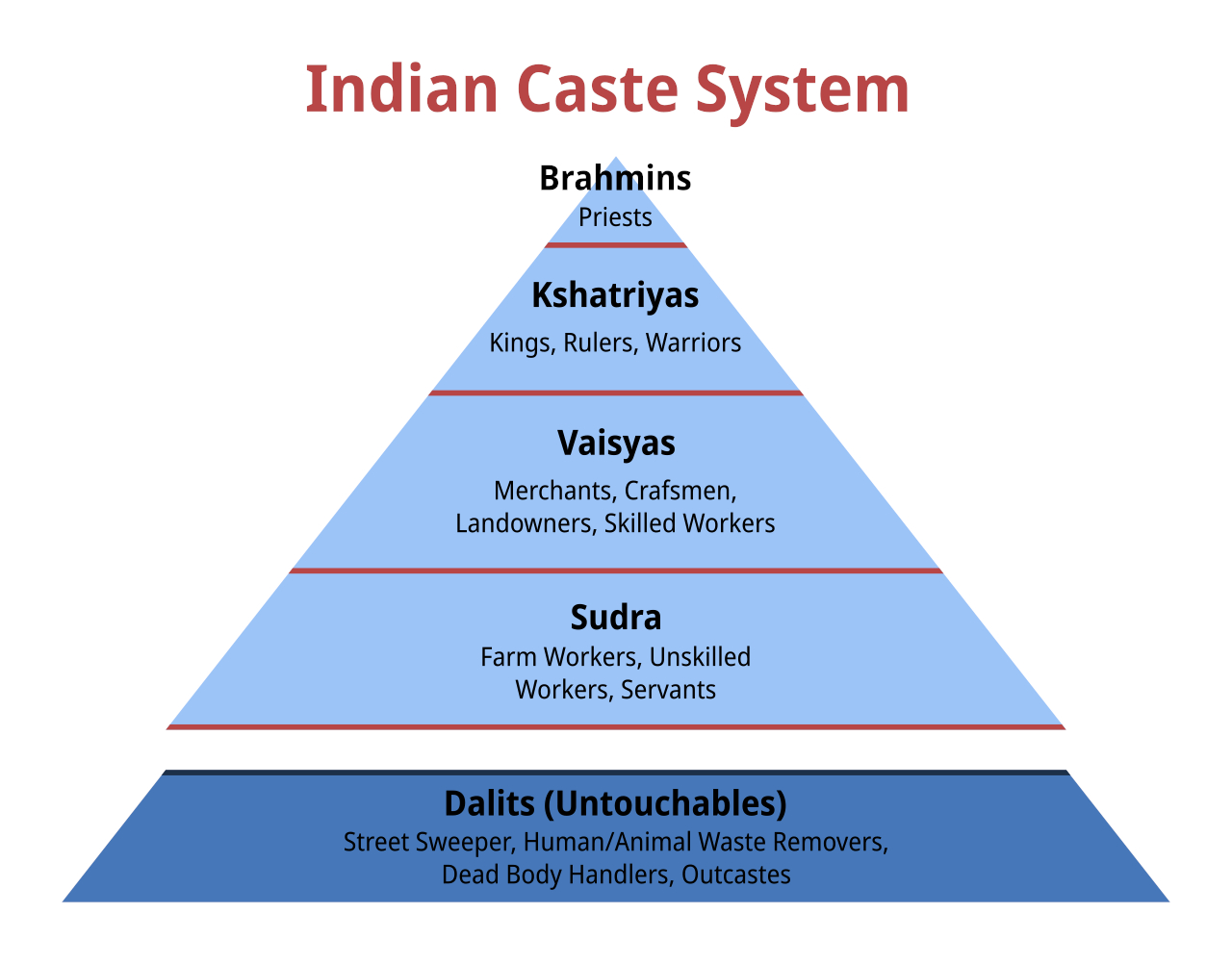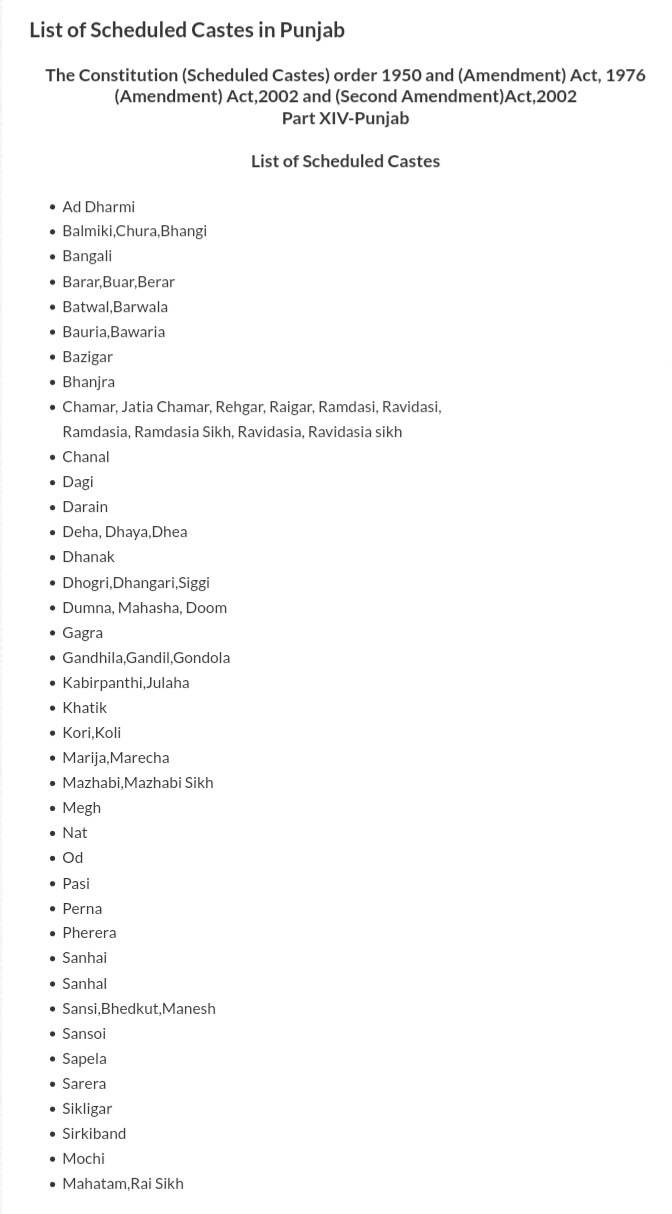|
Masoba
Mhasoba (म्हसोबा in Maharashtra), pronounced "MUH-SO-BAA", or Masoba is a horned buffalo deity of pastoral tribes in Western and Southern India. In Maharashtra, many Gawlis (tribes making their living cow-herding and by selling milk and milk products) have been worshipping this deity for hundreds of years. Rosalind O'Hanlon, Professor at the University of Oxford stated that Mhasoba is traditionally very popular in the Maratha caste. She quotes about the devotion of the Marathas in the 19th century to Mhasoba as follows: Mhasoba is also worshiped by the Bhonsles. There is a shrine of Mhasoba at the Purandar Fort and there is also a beautiful water reservoir nearby that is named after him i.e. 'Mhasoba Taki'. Mhasoba's shrines are not Brahminical and there is nothing written about him in Sanskrit literature. He is considered a "kshetrapal" i.e. guardian deity worshiped by farmers. He is also considered a "guardian brother of the seven river goddesses termed as Sati-Asara ... [...More Info...] [...Related Items...] OR: [Wikipedia] [Google] [Baidu] |
Domestic Buffalo
The water buffalo (''Bubalus bubalis''), also called domestic water buffalo, Asian water buffalo and Asiatic water buffalo, is a large bovid originating in the Indian subcontinent and Southeast Asia. Today, it is also kept in Italy, the Balkans, Australia, North America, South America and some African countries. Two extant Type (biology), types of water buffalo are recognized, based on Morphology (biology), morphological and Ethology, behavioural criteria: the river buffalo of the Indian subcontinent and further west to the Balkans, Egypt and Italy; and the swamp buffalo from Assam in the west through Southeast Asia to the Yangtze Valley of China in the east. The wild water buffalo (''Bubalus arnee'') is most probably the ancestor of the domestic water buffalo. Results of a phylogenetic study indicate that the river-type water buffalo probably originated in western India and was domesticated about 6,300 years ago, whereas the swamp-type originated independently from Mainland Sou ... [...More Info...] [...Related Items...] OR: [Wikipedia] [Google] [Baidu] |
Andhra Pradesh
Andhra Pradesh (ISO 15919, ISO: , , AP) is a States and union territories of India, state on the East Coast of India, east coast of southern India. It is the List of states and union territories of India by area, seventh-largest state and the List of states and union territories of India by population, tenth-most populous in the country. Telugu language, Telugu is the most widely spoken language in the state, as well as its official language. Amaravati is the state capital, while the largest city is Visakhapatnam. Andhra Pradesh shares borders with Odisha to the northeast, Chhattisgarh to the north, Karnataka to the southwest, Tamil Nadu to the south, Telangana to northwest and the Bay of Bengal to the east. It has the Coastline of Andhra Pradesh, third-longest coastline in India at about . Archaeological evidence indicates that Andhra Pradesh has been continuously inhabited for over 247,000 years, from early archaic Hominini, hominins to Neolithic settlements. The earliest r ... [...More Info...] [...Related Items...] OR: [Wikipedia] [Google] [Baidu] |
Palkhi
The litter is a class of wheelless vehicles, a type of human-powered transport, for the transport of people. Smaller litters may take the form of open chairs or beds carried by two or more carriers, some being enclosed for protection from the elements. Larger litters, for example those of the Chinese emperors, may resemble small rooms upon a platform borne upon the shoulders of a dozen or more people. To most efficiently carry a litter, porters either place the carrying poles directly upon their shoulders or use a yoke to transfer the load from the carrying poles to the shoulders. Definitions A simple litter consists of a sling attached along its length to poles or stretched inside a frame. The poles or frame are carried by porters in front and behind. Such simple litters are common on battlefields and emergency situations, where terrain prohibits wheeled vehicles from carrying away the dead and wounded. Litters can also be created quickly by the lashing of poles to a chair. ... [...More Info...] [...Related Items...] OR: [Wikipedia] [Google] [Baidu] |
Yatra
''Yatra'' (, ), in Indian religion, Indian-origin religions, Hinduism, Buddhism, Jainism and Sikhism, generally means a pilgrimage to holy places such as confluences of River#Sacred rivers, sacred rivers, Sacred mountains#India, sacred mountains, places associated with Hindu epics such as the Mahabharata and Ramayana, and Hindu pilgrimage sites in India, other sacred pilgrimage sites. Visiting a sacred place is believed by the pilgrim to purify the self and bring one closer to the divine. The journey itself is as important as the destination, and the hardships of travel serve as an act of devotion in themselves. A is a pilgrimage to a Tirtha and Kshetra, sacred site. Yatri is the term for anyone who undertakes the yatra. In present times, yatras are highly organized affairs, with specialized tourism companies catering to yatris. State governments are sometimes involved in the organization of annual yatras, stipulating numbers, registering yatris, and regulating yatri traff ... [...More Info...] [...Related Items...] OR: [Wikipedia] [Google] [Baidu] |
Dalit
Dalit ( from meaning "broken/scattered") is a term used for untouchables and outcasts, who represented the lowest stratum of the castes in the Indian subcontinent. They are also called Harijans. Dalits were excluded from the fourfold varna of the caste hierarchy and were seen as forming a fifth varna, also known by the name of ''Panchama''. Several scholars have drawn parallels between Dalits and the '' Burakumin'' of Japan, the '' Baekjeong'' of Korea and the peasant class of the medieval European feudal system. Dalits predominantly follow Hinduism with significant populations following Buddhism, Sikhism, Christianity, and Islam. The constitution of India includes Dalits as one of the Scheduled Castes; this gives Dalits the right to protection, positive discrimination (known as reservation in India), and official development resources. Terminology The term ''Dalit'' is for those called the "untouchables" and others that were outside of the traditional Hindu caste ... [...More Info...] [...Related Items...] OR: [Wikipedia] [Google] [Baidu] |
Dhangar
The Dhangars are caste of people found in the Indian states of Maharashtra, northern Karnataka, Goa, Madhya Pradesh . They are referred to as Gavli Dhangars in northern Maharashtra ( Khandesh region) and the forested hill tracts of India's Western Ghats, there are many distinct Gavli castes in Maharashtra and Dhangar Gavli is one of them. History Etymology The word "''Dhangar''" is inscribed in a Buddhist cave in Pune district of Maharashtra. It is believed that this inscription has its origin between the first and the third century AD. Multiple theories have been proposed for the origin of the word Dhangar. It may be associated with a term for "cattle wealth". Bhagwan Lal Indraji maintains that it is derived from Sanskrit word Dhang which means hill. Syed Siraj-Ul-Hassan noted that some people of his time believed the term to come from the Sanskrit "''dhenugar''" ("cattle herder") but dismissed that etymology as being "fictitious". In Kannada, the word Danagãra means co ... [...More Info...] [...Related Items...] OR: [Wikipedia] [Google] [Baidu] |
Chamar
Chamar (or Jatav) is a community classified as a Scheduled Caste under modern India's Reservation in India, system of affirmative action that originated from the group of trade persons who were involved in leather tanning and shoemaking. They are found throughout the Indian subcontinent, mainly in the northern states of India and in Pakistan and Nepal. History The Chamars are traditionally associated with leather work. Ramnarayan Rawat posits that the association of the Chamar community with a traditional occupation of tanning (leather), tanning was constructed, and that the Chamars were instead historically agriculturists. The term ''chamar'' is used as a pejorative word for Dalits in general. It has been described as a Casteism, casteist slur by the Supreme Court of India and the use of the term to address a person as a violation of the Scheduled Caste and Scheduled Tribe (Prevention of Atrocities) Act, 1989. Movement for upward social mobility Between the 1830s and the ... [...More Info...] [...Related Items...] OR: [Wikipedia] [Google] [Baidu] |
Mang (caste)
The Mang, or Matang is an Indian caste mainly residing in the state of Maharashtra. Matang are known as Madiga in Telangana, Andhra Pradesh and Karnataka. The community was historically believed to be associated with village security and professions such as rope making, broom making, musicians, cattle castration, leather curing, midwifery, executioners, and funeral directors. In modern day India, they are listed as a Scheduled Caste, Their origins lie in the Narmada Valley of India, and they were formerly classified as a criminal tribe under the Criminal Tribes Acts of the British Raj. Religion The most of Mang practice Hinduism and in modern times, they are ardent followers of B. R. Ambedkar and Shivaji Maharaj. The Mang celebrate all major Hindu festivals, as well as the annual Jatara festival for the deity Maisamma, which entails the sacrifice of sheep and goats and a feast of lamb and goat meat. According to the 2011 census, there were 35,831 Mangs in Maharashtra who w ... [...More Info...] [...Related Items...] OR: [Wikipedia] [Google] [Baidu] |
Pradhan (Brahmin)
Pradhan (Devanagari: प्रधान) is generally ministerial title of Sanskrit origin used in the Indian subcontinent. The Sanskrit ''pradhāna'' translates to "major" or "prime"; however, the more modern Hindi definitions provided by the Oxford Hindi-English Dictionary also include "chief" and "leader". The precise interpretation can differ significantly by region. The style was somewhat abandoned by many Indian princely states during the Mughal era in favor of Persian styles such as '' Wasir'' and '' Diwan''. Pradhan is also a surname mainly in Nepal, India etc. Local head Pradhan is elected by the village-level constitutional body of local self-government called the Panchayat (village/''gram'' government) in India. The ''Pradhan'', together with other elected members, have the power of constituencies of the gram panchayat. The ''pradhan'' is the focal point of contact between government officers and the village community. The Pradhan title in such setting is mainly used i ... [...More Info...] [...Related Items...] OR: [Wikipedia] [Google] [Baidu] |
Joshi
Joshi is a surname used by the Brahmin (caste) in India and Nepal. Joshi is also sometimes spelled as Jyoshi. The name is derived from the Sanskrit word ''Jyotishi'' meaning "astrologer" or a person who practices '' jyotisha''. ''Jyotisha'' refers to Hindu astrology and astronomy and is derived from ''jyotish'' ("light bringer or reflect light like sun").James Lochtefeld (2002), "Jyotisha" in The Illustrated Encyclopedia of Hinduism, Vol. 1: A–M, Rosen Publishing, , pages 326–327 Joshi is a common family name in Delhi, Gujarat, Karnataka, Madhya Pradesh, Maharashtra, Odisha, Haryana, Punjab, Rajasthan, Uttarakhand, Goa and Uttar Pradesh in India. Notable individuals List of people with Joshi surname, who may or may not be associated with Brahmin caste. Politicians, civil servants and military * Alok Joshi, Indian police officer and intelligence agency chief * A. C. Joshi (1908–1971), Indian botanist and Civil Service officer * Banwari Lal Joshi (1936–2017), Indian ci ... [...More Info...] [...Related Items...] OR: [Wikipedia] [Google] [Baidu] |
Smashan
A shmashana outside an Indian village A shmashana () is a Hindu crematory ground, where dead bodies are brought to be burnt on a pyre. It is usually located near a river or body of water on the outskirts of a village or town; as they are usually located near river ghats, they are also regionally called ''smashan ghat''s. Etymology The word has its origin from Sanskrit language: ''shma'' refers to ''shava'' ("corpse"), while ''shana'' refers to ''shanya'' ("bed"). The other Indian religions like Sikhism, Jainism and Buddhism also use ''shmashana'' for the last rites of the dead. Hinduism As per Hindu rites of Nepal and India, the dead body is brought to shmashana for the ritual of ''antyesti'' (last rites). At the cremation ground, the chief mourner has to obtain the sacred fire from one who resides by the shmashana and light funeral pyres (''chita'') for a fee. Various Hindu scriptures also give details of how to select the site of shmashana: it should be on the northern sid ... [...More Info...] [...Related Items...] OR: [Wikipedia] [Google] [Baidu] |







